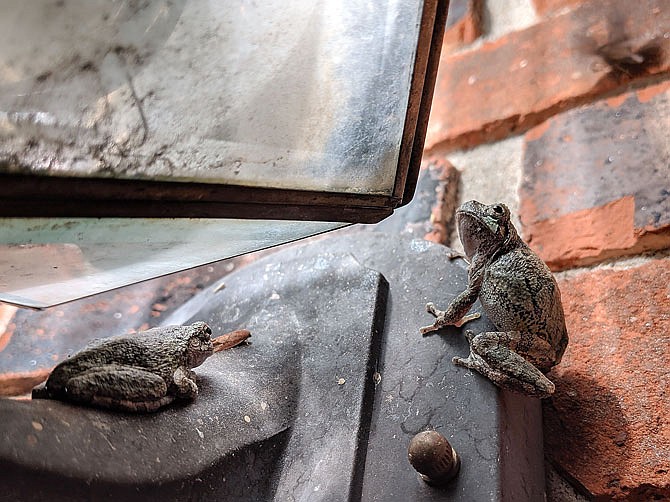While humans huddle around fireplaces and groundhogs hibernate in burrows, some of Missouri's other animals spend the winter in much stranger ways.
Sam Stewart, a Missouri Department of Conservation naturalist, recently gave a virtual present on Missouri's "strange sleepers."
"Missouri critters have curious ways of surviving the winter," he said.
As reptiles, turtles are cold-blooded: They can't control their own body temperature and instead rely on their environment. That's why on an unusually warm and sunny winter day, you might see turtles basking along the edges of a pond or river.
When the weather turns cold, they burrow into mud or dive down to the bottom of deep pools - "places that will stay a little bit warmer than surface of the water," Stewart explained.
There, their metabolism slows: their hearts beat more slowly and they process nutrients at a glacial pace. They don't fall asleep and can still move around, they're just living in turtle-time.
Like humans, turtles have lungs and breathe air, so Stewart wondered how turtles can survive under frozen-over lakes and ponds. The answer, it turns out, is cloacal respiration.
"This could also be called breathing through your butt," Stewart said. "Turtles actually have tissues back on their hind end that allows them to osmotically trade oxygen out of water."
If even that becomes impossible, turtles can extract oxygen from their own fat and sugar stores, a process called anaerobic respiration. That causes lactic acid to build up in their muscles - the same chemical that makes a person's muscles burn during a sprint. But turtles have a trick for that, too: their calcium-rich shell.
"The turtle's shell is like a Tums," Stewart said. "It lets of bases to counteract lactic acid build-up."
Frogs are also cold-blooded, and in the winter, they get very cold indeed. In fact, some species of frogs (including wood frogs, gray treefrogs and spring peepers) turn into little frogsicles over the winter.
When temperatures drop below freezing, these frogs pull the moisture out of their extremities and flood their blood with glucose, which acts as a natural antifreeze.
"Eventually that frog is going to freeze completely solid, and all that moisture will freeze too but the blood stays right above point of cells freezing," Stewart said. "The frog may go months frozen solid. And when I say frozen solid, I mean their heart stops beating."
When frogs finally thaw, they spontaneously resume their vital functions.
"That's a way for scientists to say we don't know why, but their heart starts beating again," Stewart said.
Biologists continue to study the phenomenon.
Turtles and frogs spend the winter alone, but some species of snake prefer a season-long cuddle session.
That includes rattlesnakes, which group up in caves, under bluffs and in abandoned wells - sheltered spots called hibernacula. Despite the name, rattlesnakes don't truly hibernate - instead they brumate, which involves a slowed metabolism and lots of snoozing. One hibernaculum could hold dozens to hundreds of snakes.
Stewart said several species of rattlesnake might share the same hibernaculum. There's warmth in numbers, after all. When spring comes, smaller snakes might become snacks for their larger roommates.
Stewart encouraged Missourians to leave sleeping creatures alone during the winter, rather than trying to "help."
"They're great at surviving, as we learned today," he said.
He pointed out these species fill important niches in the ecosystem, as pest control and food for other creatures.
"Those strange sleepers are also important wakers: they serve important purposes in the communities where they live," he said.
To learn about upcoming Missouri Department of Conservation virtual classes, visit mdc.mo.gov/events.

